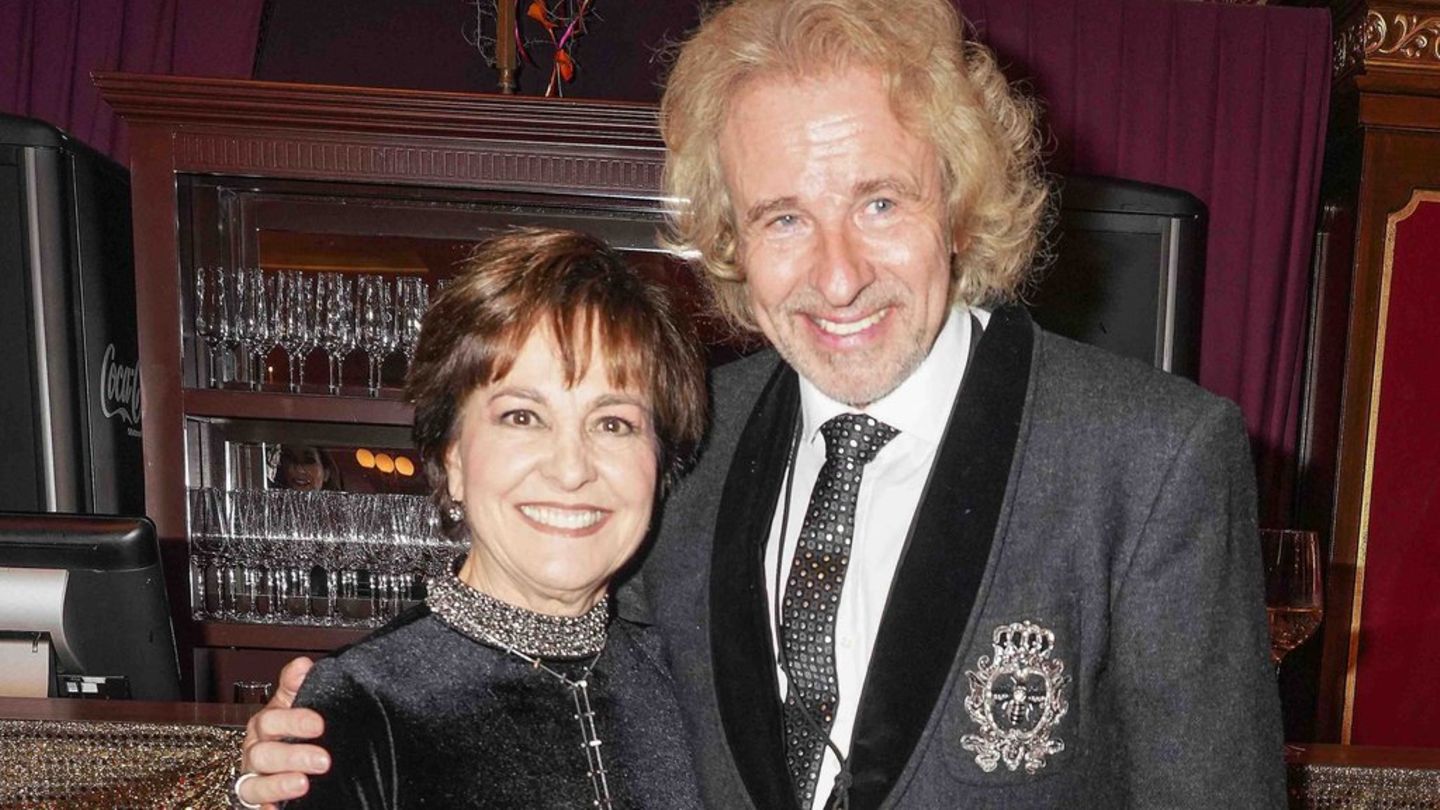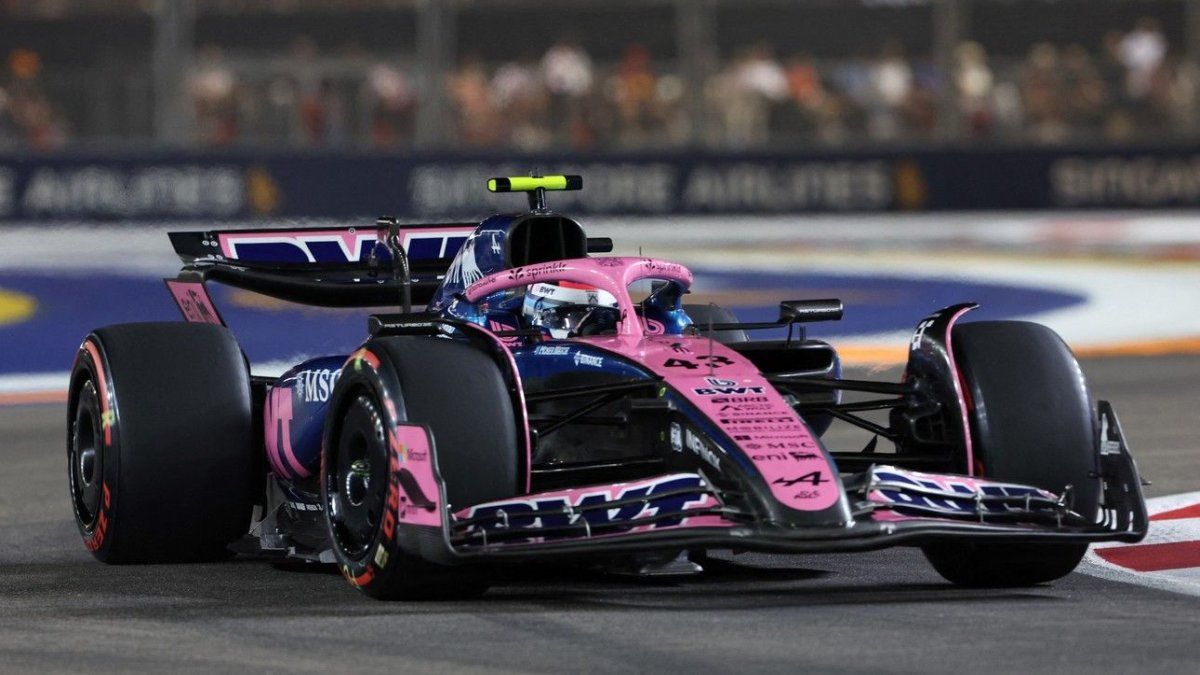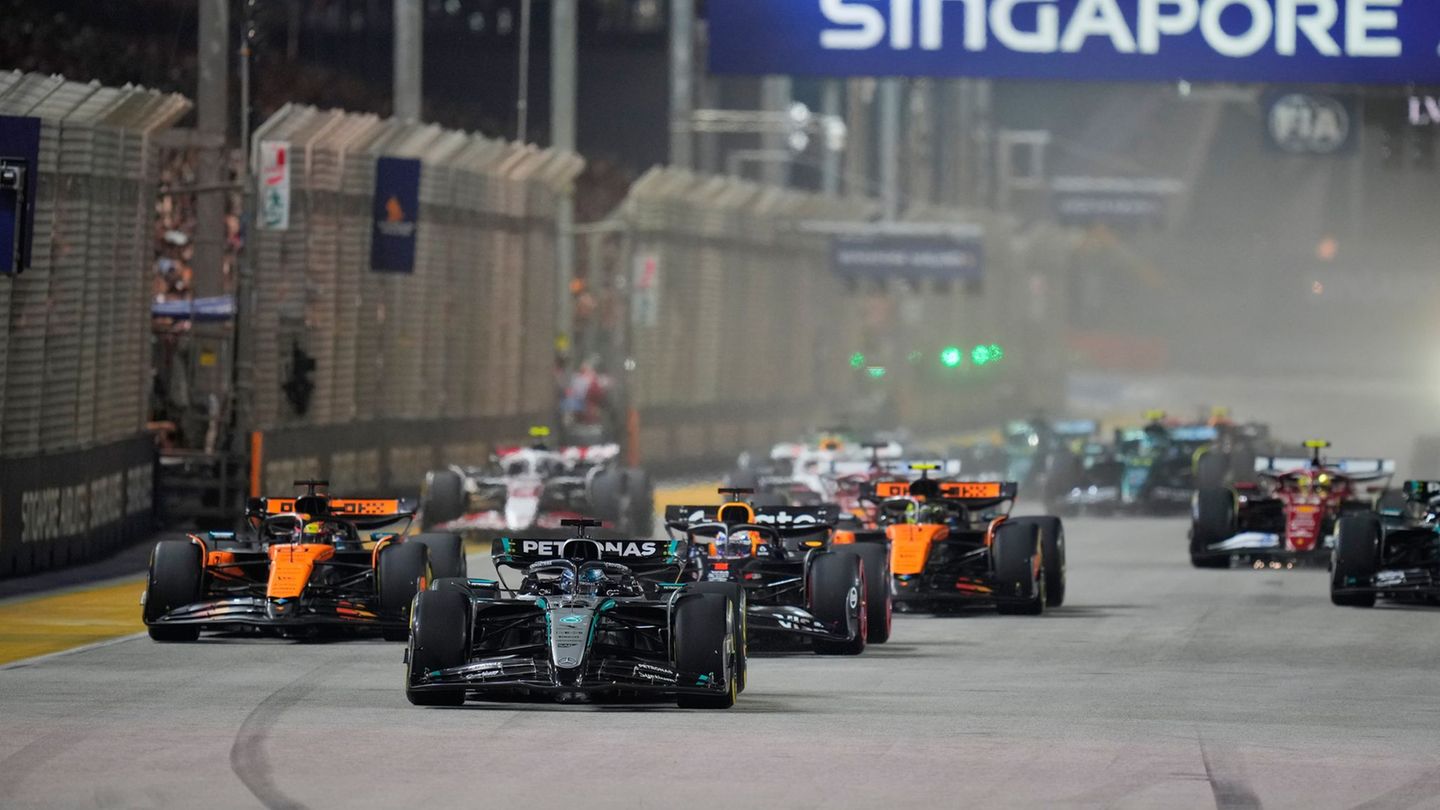Honolulu is the capital of the Hawaiian Islands and also the largest city in Polynesia. Almost a million people, almost two-thirds of the total population, live in the conurbation of the South Seas metropolis. It stretches 25 miles along the south shore of the island of Oahu, one of the archipelago’s six main islands. Everywhere else it is mostly quite quiet, unless a volcano starts to rumble again. And that happens, as Kilauea on the neighboring island recently proved again when it caused lava flows to flow.
Forming the longest chain of islands in the world, the Hawaiian Islands are all volcanic—the peaks of volcanoes rising out of the Pacific Ocean and sitting deep on the ocean floor. The shield volcanoes of the geologically youngest and largest of the Hawaiian Islands, the main island of Hawaii (“Big Island”), are actually the highest mountains on earth: the summit of Mauna Kea is 4205 meters above sea level, while its base is 5400 meters of sea depth – i.e. around 9600 meters of vertical extension.
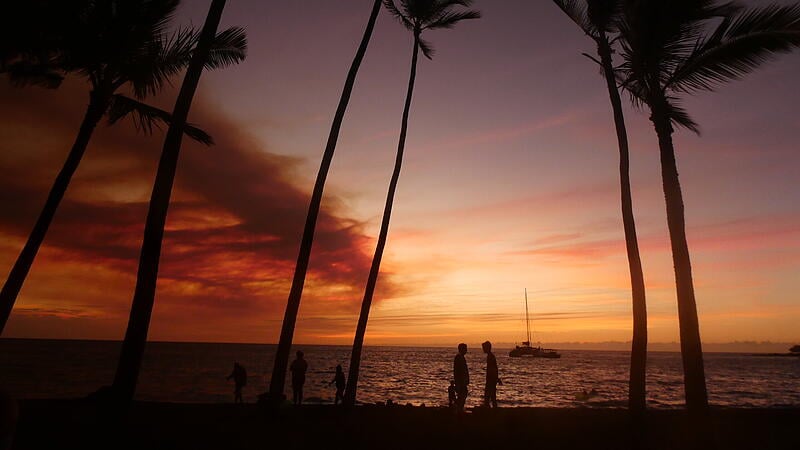
Image: Spreitzhofer
On Oahu, the heart of the island world, the rough charm of the black beaches of some of the neighboring islands is hardly noticeable. 64 kilometers long, 42 kilometers wide and 336 kilometers of coast: With 1557 square kilometers, Oahu is only the third largest of the Hawaiian Islands after Maui and smaller than the Innviertel. But economic and political power has almost always been here, where three quarters of all tourists arrive. And that’s not a few. There were over 10 million in 2019, the last year before the pandemic, bringing in $2 billion in tax revenue to the archipelago.
In the 19th century, pineapple and sugar cane became big business, numerous Asian guest workers came – and stayed. Only seven percent of the population is of Polynesian origin, more than half are East Asians, mostly from Japan, Korea and the Philippines. Hardly any other state in the USA has a similarly multicultural society as today’s air hub in the Pacific, which became the focus of world public attention at the latest with the Japanese sinking of the US fleet in Pearl Harbor in 1941. The area is now a memorial managed by the US National Park Service, just behind Honolulu International Airport, past Oahu’s Chinatown and the Aloha Tower, which became the city’s landmark in 1921. Honolulu has always known how to please, and the marketing of prominent literary figures probably didn’t detract from that. Robert L. Stevenson was there to dine with King Kalakaua, Jack London found his second home here, and Mark Twain had nothing but good things to say about the fascinating new world in the middle of the ocean.
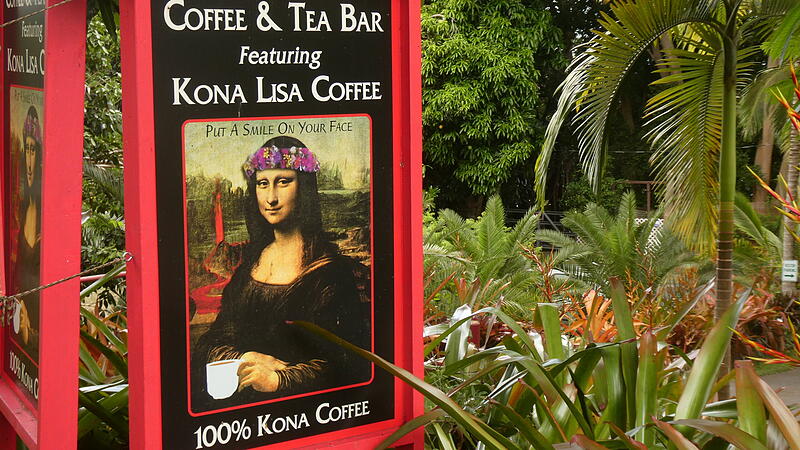

Image: Spreitzhofer
The South Seas myth of the early 20th century gradually gained momentum: ukulele bands and hula dancing still determine tourism advertising in the country where Barack Obama was born in 1961. However, religious rituals for worshiping kings and chiefs were abandoned at the latest with the beginning of the Hawaiian film industry, which has long since become an important economic factor: No wonder, Hawaii is a popular film setting and has been the location of numerous film productions such as Jurassic Park or Magnum, Baywatch or “Blaues Hawaii” with Elvis Presley, who also played a little ukulele there, what else.
Waikiki used to be a retreat for members of the royal family to learn to surf. Today it’s a glamorous Honolulu beach suburb, with four kilometers of beaches, tall palm trees and even taller skyscrapers, hotels and apartment blocks. The skyline is imposing, especially from a bird’s-eye view from the summit of Diamond Head just next door – a 232-meter-tall tuff formation above an extinct volcanic crater whose glittering calcite sprinkles were once mistaken for diamonds by sailors. Asphalt walkways, tunnels and ladders make it into and up the grassy crater for almost anyone who doesn’t mind a little sweat as there is no shade. But no one has regretted it – the view of the fantastic play of colors from turquoise coasts far below and deep green, mostly cloud-covered slopes of extinct volcanoes inland.
Where selfies make you happy
There, the pineapple maze on the Dole Plantation and the Polynesian Cultural Village have fascinated generations of tourists for decades: raffia skirts, shoe platters and melodic folk music with synthesizers – most people like it, and selfies with lei flower necklaces around their necks apparently make them happy. Shopping at the Waikiki Christmas Store afterwards is also part of it, all year round, where even Santa Claus has plastic flowers stuck behind his ear.
Even further north, at least in winter, things really get going when the international surfing elite come together in waves up to 15 meters high. Then the average water temperature drops to 24 degrees, the average air temperature is 27 degrees – there are more inhospitable regions in January. In summer, not much happens on the North Shore of Oahu, apart from the line of people waiting for “Matsumoto Shave Ice”: Shave ice is a Hawaiian specialty in which ice is shaved off blocks of ice and finished with brightly colored syrup and flavorings. The ice cream shop has become an institution and has long since attracted more than just Japanese day tourists on booked island tours.
Surf legend Duke
Most tourists still reside in Waikiki, where the booking platform booking.com alone lists 688 accommodations, most of which are fully booked for many months. There, on Kuhio Beach, the statue of Duke Kahanamoku sits enthroned amidst palm trees and long rows of surfboards, which are rented out or reserved no later than noon. Duke was a three-time Olympic swimming champion for the USA, the founder of modern surfing and the longtime sheriff of Honolulu.
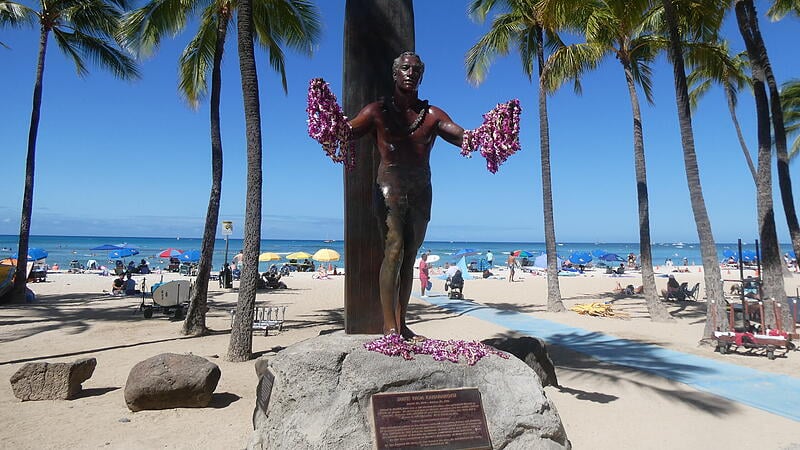

Image: Spreitzhofer
He is a Polynesian legend, his statue usually decorated with wreaths of flowers, attracts selfie snappers. The queue can be tens of meters long. Duke was born in 1890 in the Kingdom of Hawaii, because the island chain was only annexed by the United States eight years later and in 1959 as the State of Hawaii became the 50th state of the USA – 3700 kilometers or a five-hour flight from the American west coast. The land area of the 137 islands and atolls together is about twice the size of the state of Salzburg, but few are inhabited.
There is no beer in Hawaii, at least that’s what Paul Kuhn suspected in his 1963 hit. Obama was two years old at the time and probably had other worries. The beer thing has changed, if it ever did. And a lot has changed on the north-eastern tip of Polynesia, which is still commonly counted among the South Sea islands. They used to be called the Sandwich Islands, and stays were probably a little cheaper than they are today. There is also groceries in the ABC stores, which have exactly the same range of Hawaiian shirts, beach sarongs and plastic flower necklaces every few hundred meters near the beach. About nine bucks a gallon of milk. Or plain toast for a bargain six and a half dollars a pack. Actually quite cheap anyway, because a single scoop of ice cream on the beach costs a lot more. That doesn’t seem to bother the Japanese women with their Dior handbags and high-heeled sandals, who crowd the sidewalks with barefoot, well-tanned and well-built beach boys with boards.
$135 for a surf lesson
Beauty has its price, which not everyone can afford – or want – anymore. And so, since 2010, Oahu has become a churn area. “The cost of living is just too high,” says Sam, the young surfboard rental company, who charges $35 an hour to rent. In return, the daily sunset in Waikiki is free, unless a bank of clouds on the horizon or an extended Mormon family from Salt Lake City are in the picture. Or a wedding party. Or a bunch of novice surfers with an instructor shelling out $135 each for a single surfing lesson, excluding taxes and tips.
In any case, it can get crowded on the beach in the evening. Snorkeling paradises like Hanauma Bay, which have long since become subject to fees and reservations, often close well before noon due to overcrowding – this cannot happen in Waikiki. But you will never be alone there. Less crowded, more idyllic beaches are to the east for those who want to escape the hustle and bustle: Waimanalo or Lanikai Beach near Kailua, for example, which was ranked among the top five of the world’s best beaches by National Geographic. Just getting there can be difficult, because the only way to do it cheaply is with TheBus, the public bus network that, unlike the other islands, is well developed on Oahu. A small rental car will save you $150 a day on Oahu, if you can still get hold of one. After two years of Corona, the backlog demand for Polynesian vacations seems enormous, and not only from the American mainland. Oahu alone saw almost six million tourists a year before the pandemic brought global life to a standstill. If you want to have a drink, you go – you guessed it – to ABC, buy a few bottles of Corona beer and enjoy the freedom you have regained. Duke would have liked that. In any case, Paul Kuhn was wrong. Hey Hawaii!
more from travel
No half measures on the Mexican Peninsula
Why actually Athens? Therefore!
A taste of home in Singapore
The five most beautiful travel destinations in the run-up to Christmas
My themes
For your saved topics
found new items.

info By clicking on the icon you add the keyword to your topics.
info
Click on the icon to open your “My Topics” page. They have of 15 tags saved and would have to remove tags.
info By clicking on the icon you remove the keyword from your topics.
Add the theme to your themes.
Source: Nachrichten

